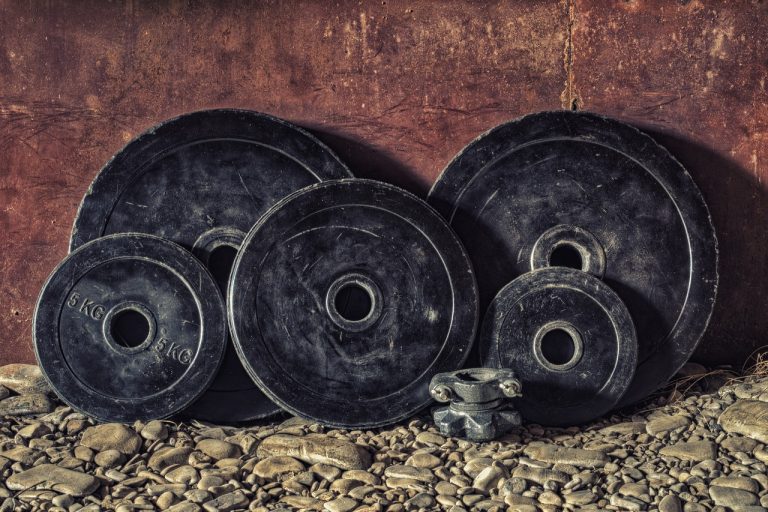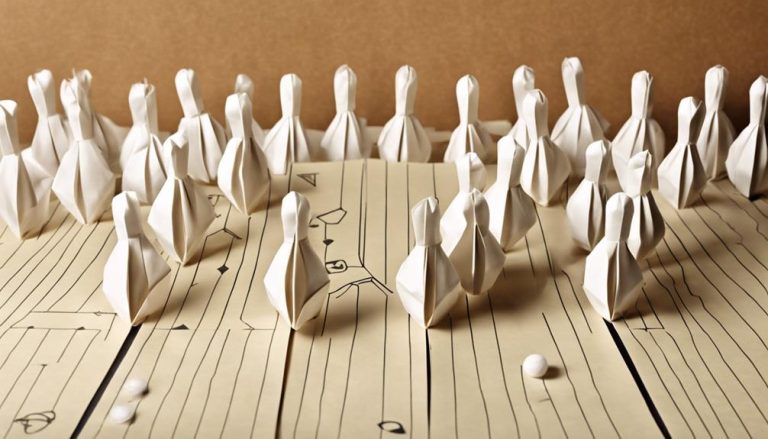General Rules of Roller Soccer
In the roller soccer arena, understanding the rules is like threading a needle in a haystack. But fear not, as we're here to guide you through the maze of regulations and guidelines that govern this thrilling sport. From the way players position themselves on the rink to the nuances of handling the ball, there's a lot to uncover in the world of roller soccer. So, are you ready to lace up your skates and jump into the intricacies of this fast-paced game?
Game Setup
How do you properly set up a roller soccer game to guarantee a smooth and enjoyable experience for all players? The key lies in understanding the nuances of team formations, strategy, field dimensions, and boundary dimensions. Team formations play an important role in roller soccer, determining how players position themselves on the rink. Whether you opt for a traditional 2-2 formation or a more aggressive 1-3 setup, your strategy should align with your team's strengths and playing style. Flexibility is key; adapting formations based on the game's flow can give you a competitive edge.
When it comes to field dimensions, roller soccer differs from traditional soccer due to the smaller playing area. Understanding the boundary dimensions is essential to prevent unnecessary stops in play. A standard roller soccer rink is usually around 100 feet long and 50 feet wide, providing a compact yet dynamic setting for fast-paced matches. Familiarizing yourself with these dimensions can help you make quick decisions and strategic moves during the game.
Player Positions
Understanding the strategic significance of player positions in roller soccer elevates your team's gameplay to a new level of precision and effectiveness. In roller soccer, each player's position plays a critical role in shaping the team's defensive strategies and offensive tactics. Here are some key points to ponder:
- Defensive Strategies: Player positions are pivotal in defensive strategies. The goalkeeper, as the last line of defense, must communicate effectively with the defenders to guarantee a solid defensive line. Defenders need to mark opponents tightly and anticipate plays to intercept the ball.
- Offensive Tactics: Player positions are equally important in offensive tactics. Forwards are tasked with scoring goals, requiring speed and agility to break through the opponent's defense. Midfielders act as playmakers, linking defense to attack and facilitating ball movement.
- Substitution Rules: Understanding player positions is crucial when making substitutions. Knowing which positions need reinforcement or fresh legs can give your team a tactical advantage. Effective substitutions can change the course of a game.
- Communication Skills: Communication among players is vital for effective gameplay. Clear and concise communication helps in coordinating movements, setting up plays, and alerting teammates to potential threats.
In roller soccer, mastering player positions is the cornerstone of a successful team. By understanding the roles and responsibilities associated with each position, you can enhance your team's performance and aim for victory.
Ball Handling
When it comes to roller soccer, mastering ball handling skills is essential for achieving control and precision on the court. Improving your skills in ball handling can have a major impact on your performance during a game. Dribbling techniques play a critical role in maintaining possession, creating scoring opportunities, and outmaneuvering opponents.
To enhance your ball handling abilities, focus on developing your dribbling techniques. Practice controlling the ball with different parts of your feet, including the inside, outside, and sole. This versatility will allow you to react quickly to changing game situations and evade defenders effectively. Additionally, work on your ball control at varying speeds to simulate game conditions accurately.
Another important aspect of ball handling is maintaining awareness of your surroundings. Keep your head up while dribbling to assess the positions of your teammates and opponents. This awareness will enable you to make split-second decisions, such as passing the ball or changing direction, to exploit openings in the defense.
Moreover, mastering dribbling under pressure is key to becoming a proficient roller soccer player. Practice shielding the ball from defenders using your body to create space and protect possession. Utilize quick changes in direction and pace to keep opponents guessing and maintain control of the game.
Scoring Rules
Delving into the intricacies of roller soccer scoring, understanding the rules and regulations governing goal-scoring plays a pivotal role in shaping your strategic gameplay and overall performance on the court. Scoring in roller soccer is not just about kicking the ball into the net; it involves a combination of skill, tactics, and timing to outplay your opponents effectively. Here's what you need to know:
- Goal Celebration: Expressing your joy and excitement after scoring a goal is an essential part of roller soccer. Engaging in creative and spontaneous celebrations can boost team morale and intimidate the opposing side.
- Scoring Techniques: Mastering various scoring techniques such as volleys, headers, and finesse shots can significantly enhance your goal-scoring capabilities. Being versatile in your approach can keep the goalkeeper guessing and increase your chances of finding the back of the net.
- Goalkeeper Involvement: Goalkeepers play a pivotal role in preventing goals and initiating counterattacks. Understanding their positioning and tendencies can help you exploit their weaknesses and capitalize on scoring opportunities.
- Goal Line Technology: In modern roller soccer, goal line technology is sometimes used to determine whether a goal has been scored. This technological advancement ensures fair play and accurate decision-making in critical goal-scoring situations.
Penalties and Fouls
As you navigate the exciting world of Roller Soccer, understanding the nuances of penalties and fouls can be important to your success. Types of penalties can range from minor infractions to more severe offenses that can affect the outcome of the game. Familiarize yourself with common foul scenarios and the rules surrounding penalty kicks to elevate your gameplay and avoid costly mistakes.
Types of Penalties
Understanding the various types of penalties in roller soccer is important for players to navigate the rules effectively and maintain fair play on the court. When it comes to penalties, there are specific rules and strategies to take into account:
- Penalty Kick: Mastering the art of the penalty kick can give your team an advantage during pivotal moments of the game.
- Penalty Box Rules: Knowing the regulations within the penalty box is essential to avoid foul play and guarantee fair competition.
- Direct Free Kick: Understanding when a direct free kick is awarded and how to capitalize on this opportunity can change the game's outcome.
- Indirect Free Kick: Utilizing indirect free kicks effectively requires precise teamwork and strategic thinking.
- Penalty Shootout: Being prepared for penalty shootouts can be the difference between winning and losing a match.
Common Foul Scenarios
Exploring the intricacies of common foul scenarios in roller soccer requires a vital understanding of penalties and fouls to maintain a fair and competitive gameplay environment. Player behavior plays an essential role in determining foul scenarios. Actions like tripping, pushing, or intentionally obstructing opponents can lead to fouls. Referee decisions are pivotal in addressing these situations promptly and fairly. Referees must assess the severity of the foul, consider the context of the game, and apply the rules consistently to uphold the spirit of fair play. By swiftly and decisively penalizing inappropriate player behavior, referees guarantee that the game remains enjoyable and safe for all participants. Understanding the nuances of common foul scenarios enhances the overall experience of roller soccer, encouraging players to compete with integrity and respect.
Penalty Kick Rules
To fully grasp the intricacies of roller soccer gameplay, one must investigate the rules surrounding penalty kicks, particularly in relation to penalties and fouls. Penalty kicks are pivotal moments that can turn the tide of a match, requiring both skill and strategy. Here are some key points to contemplate:
- Goalkeeper strategies: Goalkeepers must decide whether to stay centered, dive early, or read the shooter's body language.
- Shooting techniques: Players can opt for power shots, placement shots, or even use deception to outsmart the goalkeeper.
- Penalty kick psychology: Understanding the psychological aspect of penalty kicks can give players an edge in these high-pressure situations.
- Goal line placement: Shooters must carefully choose where to aim on the goal line to maximize their chances of scoring.
- Practice makes perfect: Consistent practice of penalty kicks can build confidence and improve success rates in pivotal moments.
Equipment Requirements
When considering the equipment requirements for roller soccer, it is essential to prioritize safety and performance. Safety gear is paramount in roller soccer to prevent injuries. Players must wear helmets, knee pads, elbow pads, and wrist guards to protect themselves while playing. It is key to invest in high-quality safety gear to guarantee maximum protection during the fast-paced game.
Another critical aspect of equipment in roller soccer is the playing surface. The game is typically played on smooth and flat surfaces such as basketball courts, roller rinks, or indoor soccer arenas. The surface should be free of debris or obstacles that could cause players to trip or fall. Having the right playing surface not only enhances the performance but also reduces the risk of accidents.
Below is a table detailing the essential equipment requirements for roller soccer:
| Equipment | Description |
|---|---|
| Helmet | Protects the head from impacts |
| Knee pads | Cushions and protects the knees |
| Elbow pads | Guards the elbows from injuries |
| Wrist guards | Support and protect the wrists |
Ensuring that players have the necessary safety gear and play on suitable surfaces is crucial for an enjoyable and safe roller soccer experience. Remember, safety first, but don't forget the thrill of the game!
Game Duration
When it comes to Roller Soccer, the game duration is important to maintaining the intensity and excitement of the match. Time limits are carefully set to balance the action-packed nature of the game with strategic play. The halftime break provides players with a chance to refuel and strategize for the remainder of the match.
Time Limits
In Roller Soccer, the time limits for game duration play an important role in maintaining the pace and excitement of the matches. When strategizing, consider the clock as a pivotal element influencing your decisions. Here are some key points to keep in mind:
- Time management is essential for executing your strategy tactics effectively.
- Effective team communication becomes even more critical as the clock winds down.
- Defensive positioning should be adjusted based on the remaining time to protect your lead.
- Seize offensive opportunities quickly, especially in the final minutes of play.
- Understanding the time limits allows you to plan your gameplay and adapt your tactics accordingly for a successful outcome.
Halftime Break
During the halftime break in Roller Soccer games, players have a critical opportunity to regroup, strategize, and recharge for the upcoming half. Player hydration becomes essential during this short respite. Ensuring players replenish lost fluids and electrolytes is vital for maintaining peak performance levels in the second half. Coaches play a pivotal role during halftime, utilizing this time to adjust tactics, motivate players, and address any weaknesses observed in the first half. Effective coaching strategies can make a significant impact on the outcome of the game. It's a moment for players to catch their breath, refocus, and come back stronger. The halftime break is not just a pause in the game but a strategic window where the course of the match can be altered.
Frequently Asked Questions
Are There Any Restrictions on the Type of Shoes That Players Can Wear During a Roller Soccer Game?
When it comes to your footwear for roller soccer, the game's all about freedom. Different shoe types are allowed, so it's up to your player preference. Just make sure to check the shoe regulations!
Can Players Substitute Themselves During a Game or Do They Need to Wait for a Stoppage in Play?
In roller soccer, you can't self-substitute during play, waiting for a stoppage is key. This restriction adds a layer of strategy, influencing when you choose to swap out players. Continuous play offers an advantage, pushing teams to plan their substitutions wisely.
Is There a Specific Size or Weight Requirement for the Ball Used in Roller Soccer?
When playing roller soccer, the ball material, size, and weight are important factors to take into account. It's vital to make sure the ball meets inflation requirements for best performance. A well-suited ball enhances your game experience and skills.
Are There Any Specific Rules Regarding Physical Contact Between Players During a Game?
When it comes to physical contact etiquette in roller soccer, remember that player sportsmanship boundaries are key. Respect your opponents, play hard but fair, and prioritize safety. Good sportsmanship enhances the game for everyone involved.
How Are Ties or Draws Handled in Roller Soccer Matches?
In roller soccer, ties are typically resolved through overtime rules. If no winner emerges after extra time, a penalty shootout determines the victor. This system confirms fair play, promoting sportsmanship and adding excitement to the game.






